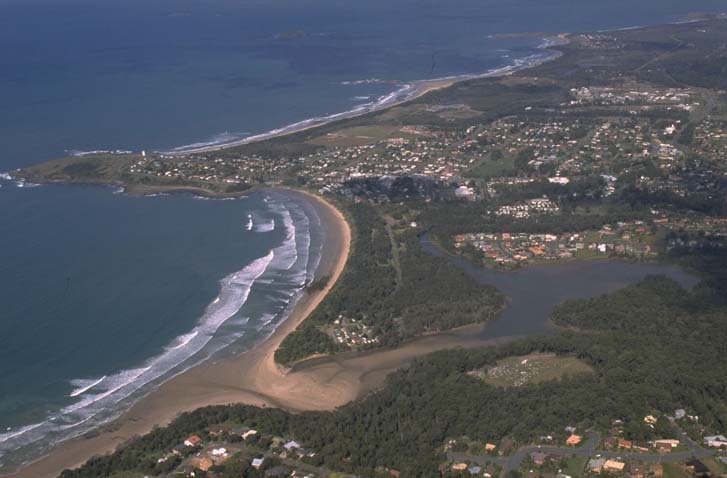The Wooli Wooli River flows through Yuraygir National Park and enters the sea near the township of Wooli on the north coast of New South Wales.
The entrance to Wooli Wooli River estuary has trained walls to ensure the estuary remains open to the sea. It is classed a medium-sized barrier river estuary.
Water quality report card
As part of our water quality monitoring program we assess the water quality and ecosystem health of an estuary using a range of relevant indicators. We sample a subset of the estuaries located between the Queensland border and Taree every 3 years. The most recent sampling in Wooli Wooli River was completed over the 2021–22 summer, when 2 sites were sampled on a monthly basis.
This report card represents 2 water quality indicators that we routinely measure: the amount of algae present and water clarity. Low levels of these 2 indicators equate with good water quality.
Algae
Water quality
Overall grade
The report card shows the condition of the estuary was good with:
- algae abundance graded good (B)
- water clarity graded good (B)
- overall estuary health graded (B).
Grades for algae, water clarity and overall are represented as:
- A – excellent
- B – good
- C – fair
- D – poor
- E – very poor.
Go to estuary report cards to find out what each grade means, read our sampling, data analysis and reporting protocols, and find out how we calculate these grades.
We have monitored water quality in Wooli Wooli River since 2009. This table shows the water quality grades for this estuary over that time.
| Year | Algae | Water clarity | Overall grade |
|---|---|---|---|
| 2009–10 | B | B | B |
| 2012–13 | A | B | A |
| 2015–16 | B | A | A |
| 2018–19 | B | B | B |
Physical characteristics
| Estuary type | Barrier river |
|---|---|
| Latitude (ºS) | –29.89 |
| Longitude (ºE) | 153.7 |
| Catchment area (km2) | 180 |
| Estuary area (km2) | 3.7 |
| Estuary volume (ML) | 2611 |
| Average depth (m) | 0.8 |
Notes: km2 = square kilometres; m = metres; ML = megalitres.
Tidal exchange volume
Tidal exchange volume, or tidal prism data, is available for this estuary. This tidal prism was measured in 2003.
| Tide state | Flow (ML) | Local tidal range (m) | Sydney Harbour tidal range (m) |
|---|---|---|---|
| Ebb flow | 1570 | 1.48 | 1.61 |
| Flood flow | 1690 | 1.44 | 1.5 |
Notes: km2 = square kilometres; m = metres; m3 = cubic metres; ML = megalitres.
Water depth and survey data
Bathymetric and coastal topography data for this estuary are available in our data portal.
Land use
The catchment of the Wooli Wooli River has relatively low disturbance. Over 98% of the catchment area is forest within Yuraygir National Park and adjacent Forestry Corporation land. A small fraction of the upper catchment has been cleared for rural residences. The township of Wooli is adjacent to the lower estuary.
National and marine parks
- Wooli Wooli River estuary is located within Yuraygir National Park and forms part of the Solitary Islands Marine Park.
Citizen science projects
- Clarence Valley Council runs the Caring for our Coastal Emus project, which includes an online emu register that community members can report where they’ve seen coastal emus.
Community involvement
- Clarence Landcare supports volunteer groups working to improve the environment in this region, including the Wooli Dunecare Group.
- Clarence Valley Conservation in Action Landcare is a group of volunteers that collect data on the endangered coastal emu.
Seafood harvest area status
The NSW Food Authority website lists the current status of oyster/shellfish harvest areas.

Aerial view of Wooli Wooli river
Local government management
Local councils manage estuaries within their area unless the estuary is attached to a marine park. Clarence Valley Council manages this estuary, which is part of the Solitary Islands Marine Park.
Threatened species
The region near the Wooli Wooli River provides a stronghold for a population of endangered coastal emus, whose range continues to contract.
The endangered swamp foxglove is a herb that exists in the Wooli Wooli River catchment. Coastal saltmarsh, an endangered ecological community, is relatively abundant along the Wooli Wooli River.
Read more about the biodiversity in our estuaries.